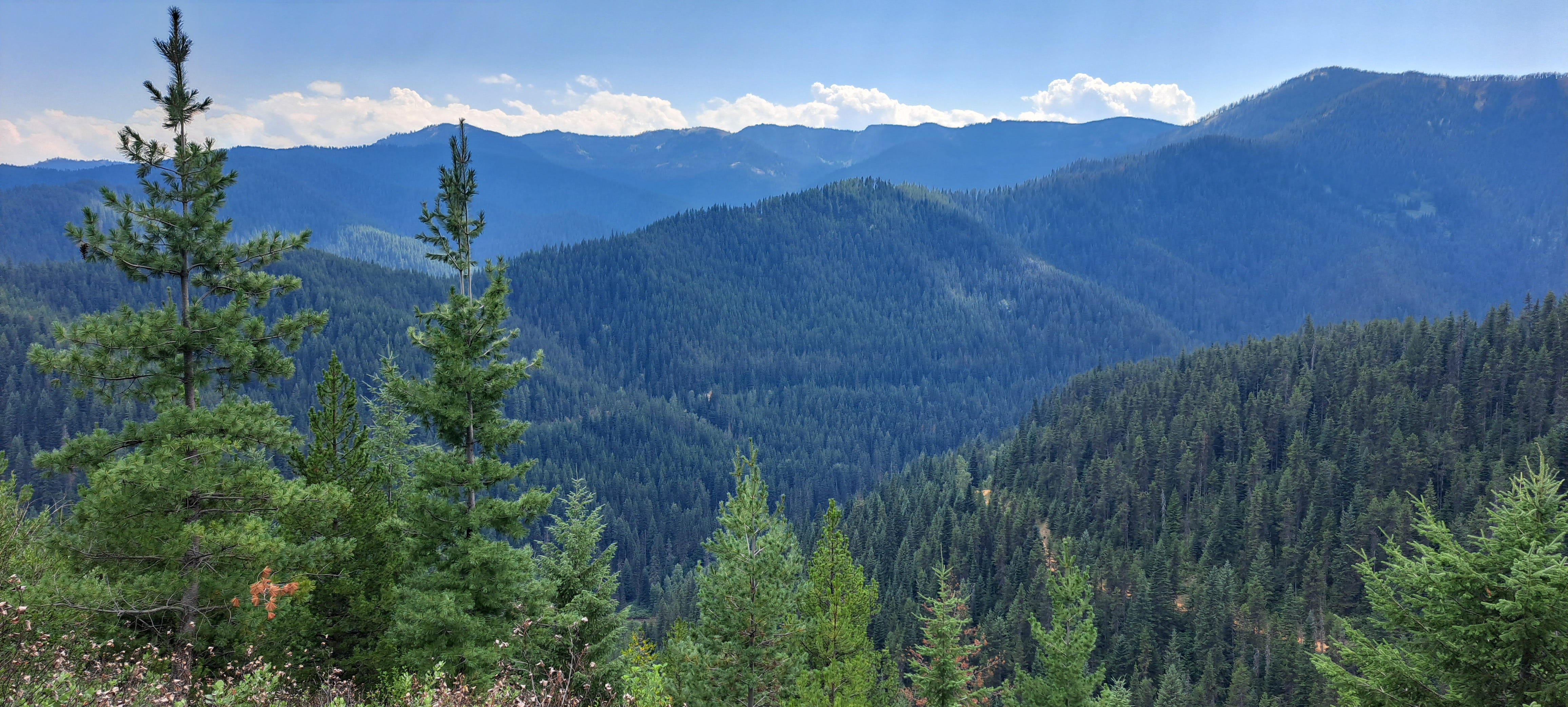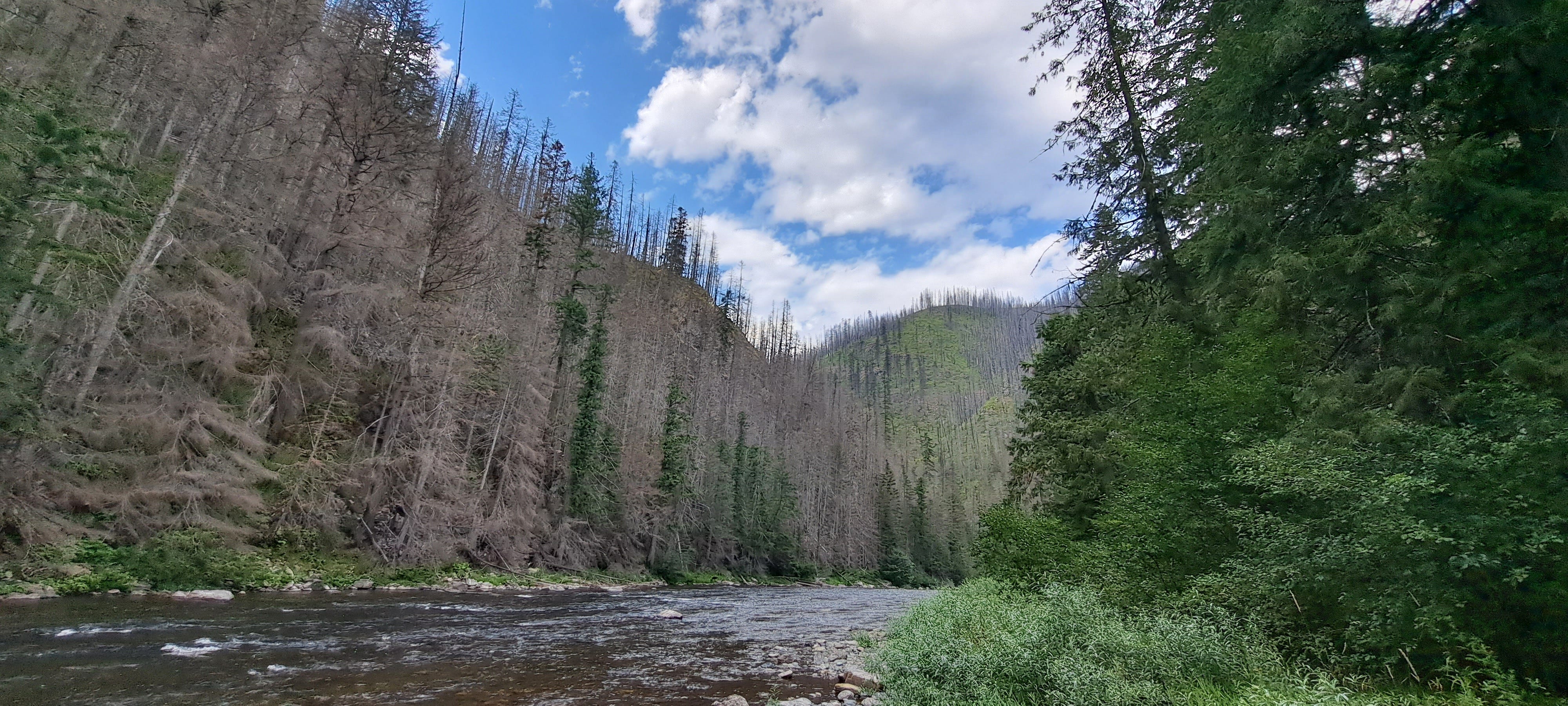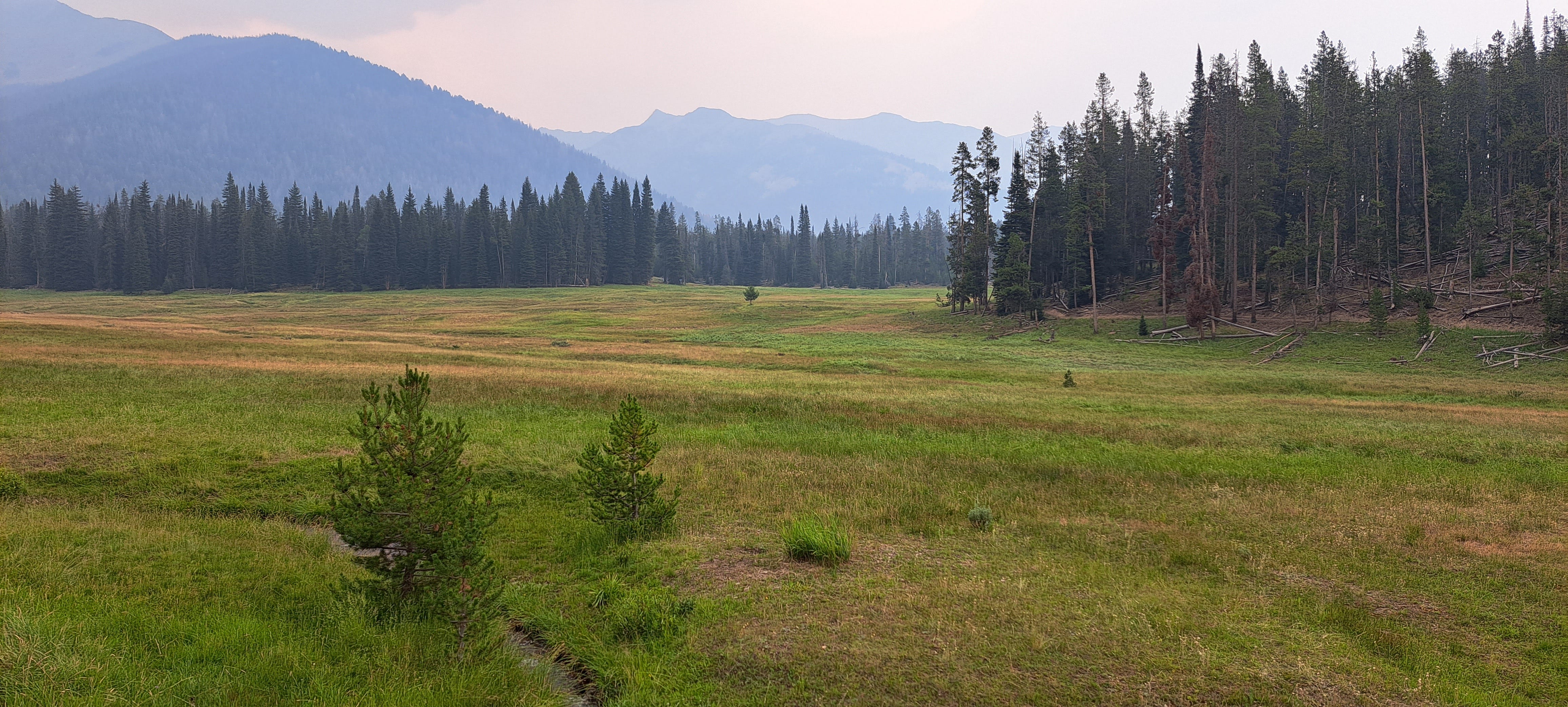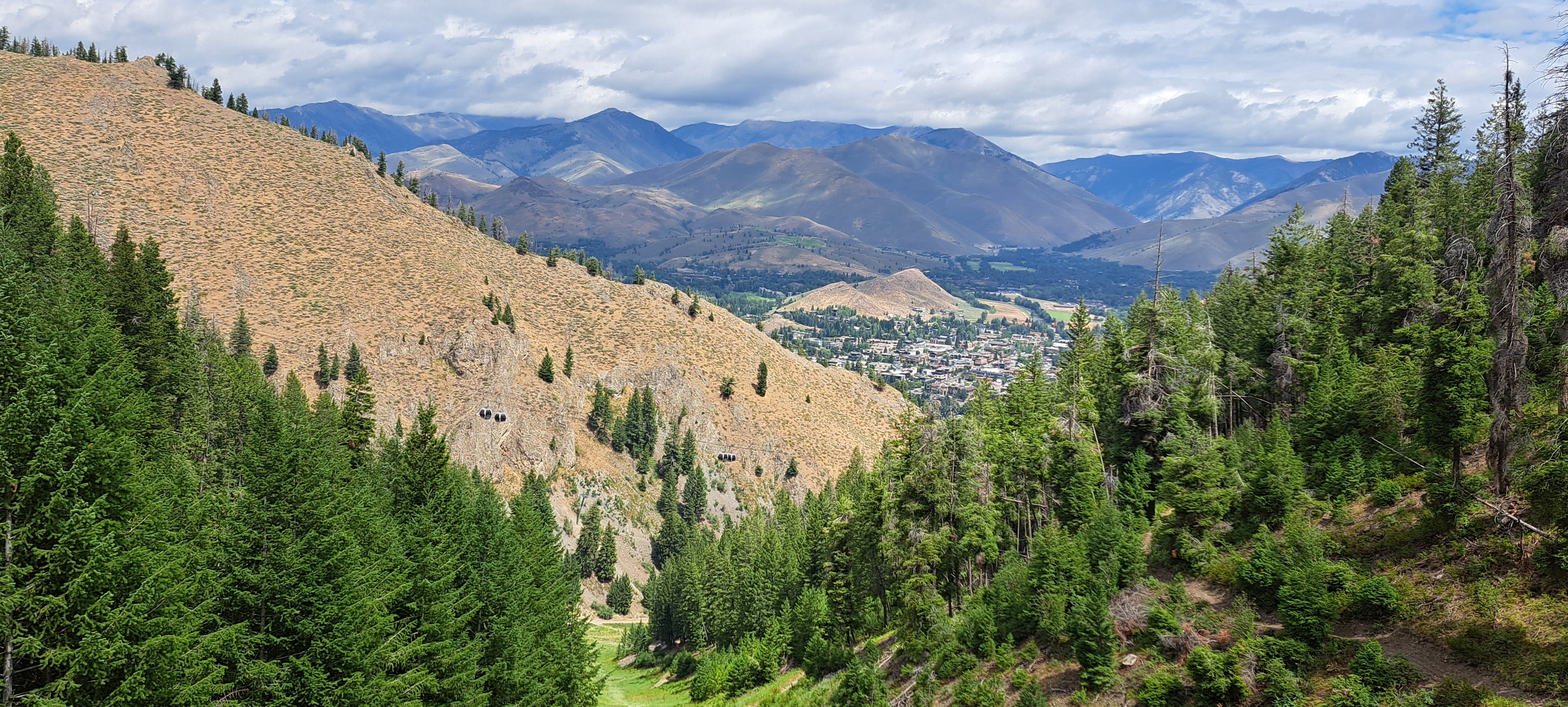In the Summer Slipstream of America's Natural Brilliance
Going back home for a renewal of family reconnections and indomitable landscapes
This essay is a break from the music norm.
It is a download of thoughts gathered after visiting the western half of the United States for two months this past summer. In practical terms, the trip served as an interlude from everyday life that is necessary for the renewal of family connections and a reconnection with the land.
America is a large and looming place, full of spectacular sights and convoluted insights.
I’ve lived outside the country for the past 30 years. My memories are getting outdated. And my country may be in decline.
However, the overarching character of America is defined by its ecosystems, its grandeur and its natural diversity. A timely visit to the panoramic “purple mountains majesty” of the Western States provides a needed sense of awe and enrichment.
Join me below for a rambling discovery tour across the American West.
Western Landscapes That Illustrate and Shape America’s Bravado
I work in the rainforest. It’s an elegant and extraordinary ecosystem.
But it’s an enclosed environment that is thick with plant life that fights for every ray of sunlight in order to survive. It makes humans feel like they’re trapped in a green maze of monotony. Without a trail or map, there is no outlet or escape.
That’s why the western landscapes of the USA capture my imagination and spirit. They are open to exploration and discovery with a sense of earned freedom. The terrain may be harsh or daunting, but there is always a way out when you can still see the big sky or the grassy horizon.
It is the ecological opposite of rainforest habitats.
And it gives you a different vantage point and perspective of the world.
The Mojave Desert
America is blessed with four major desert ecoregions that splatter across a large portion of California, Arizona, Nevada, New Mexico and Utah. The Mojave Desert sits on the eastern side of the Sierra-Nevada mountains opposite from Los Angeles.
It’s the waterless beachfront. Famous for its unique species and the wonderful and bizarre Joshua Tree National Park, the desert is an ecological heat sink full of survivors.
The Central Texas Prairie & Woodlands
Even in the middle of Texas, the natural flora takes on a hardy character. It’s a mixture of plains and prairies that dominate the flatlands with flourishes of dense hardwood trees.
It looks picture perfect for cattle, horses and cowboys. But there were other creatures roaming these woodlands back in more ancient times.
This is Dinosaur Valley State Park, where dinosaur footprints are etched in the riverbed as a reminder of our prehistoric predecessors.
Great Plains Prairie Grasslands
I was born in South Dakota and grew up in middle America, in the region known as the Great Plains, that stretches from central Texas on through to Canada.
These tall, short and mixed grassy landscapes are in my DNA and form part of my perspective on the world. Prairies were my first look at horizons.
The Little Bluestem Grass, pictured above in central Texas, is a prairie survivor from centuries of plowing for pasture. It only remains in remnant patches on infertile soils.
Despite the majesty of mountains, prairielands are also testimony to the tenacious character of the country.
Rails to Trails Program - Hiawatha Bike Trail
This is one of the best bike trails in America.
Converted from an old railroad line, the Hiawatha Trail is spectacular in its scenery and construction. All the original wooden trestle bridges are now made of steel. And the gravel track is wide and open to the elements.
For starters, you bike back and forth with a headlamp through a 1.6 mile dark and dank tunnel before heading downhill in daylight. Then the world opens up to reveal conifer forests on mountain slopes as far as one can see.
Biking is not like hiking, it feels glorious. It is the essence of feeling free in the great outdoors as you ride into the sun and wind all as one.
Idaho Panhandle National Forests & Wild Rivers
Wild rivers are natural arteries that flush your spiritual system with new vigor. They are the lifeblood that courses through the landscape and into your veins.
The Saint Joe River in northern Idaho starts at an elevation of over 6400 feet in the Bitterroot Range of the Rocky Mountains. It is designated as a National Wild and Scenic River.
Mixed coniferous forests - fir, larch, pine - act as protection for these critical watersheds that feed communities with fresh water. The rivers reciprocate by acting as crossover barriers from runaway wild fires.
Inland Northwest Forest Management
In a simplified way to understand timber logging, there are two main forest management zones: tropical and temperate forests.
Most of the attention is on tropical rainforests. Why? Because these dynamic habitats house most of the world’s plant and animal biodiversity. Think jaguars and orangutans.
In temperate zones, tree species diversity is less and there are larger tracts of contiguous conifer trees (e.g. pine, fir, spruce). This allows for the practice of clearcutting forests in total, followed by replanting of the entire area.
In comparison, in tropical zones logging is highly selective due to the diversity of tree species growing in one area.
High-Altitude Alpine Lakes
Getting to an alpine lake takes a bit of hiking effort.
Formed by glacial melt, these higher elevation lakes are surrounded by rocky slopes and scattered trees. They are water collection points that feed small streams coursing down the mountain.
Titus Lake, in central Idaho, sits near the tree line at nearly 9,000 feet. It is cold and comforting. Alpine lakes take on a character not unlike a desert oasis, where water comes out of nowhere.
They are small habitats that deserve to be appreciated.
The Palouse Prairie Fields
One of America’s least known landscapes, the Palouse region, straddling the Washington-Idaho border, is a marvel of agricultural bounty surrounded by natural wildness.
An unending carpet of fertile hills covered in wheat, canola and lentils, these farmlands reveal a kaleidoscope of green, yellow and brownish hues. It’s a magical and surreal seasonal canvas.
The intensity of crops growing in the flatlands is such an odd contrast to the spectacular mountain scenery found in the higher elevations of Idaho.
High Elevation Mountain Meadows
The Sawtooth National Recreation Area in central Idaho is a natural paradise and a monument to conservation action. It is overwhelming and expansive, covering over 730,000 acres of mountain terrain, trails and habitats.
Starting at around 7,000 feet, these high elevation mountain meadows break open the adjoining stands of lodgepole forests. They allow your eyes to view the horizon and enjoy the beauty of picturesque backdrops.
The entire Sawtooth Range is full of wildlife from beavers to black bears, cougars to coyotes and mountain goats to mule deer. So it is easy to see how important these stunning meadows play a part in preserving the ecosystem.
Living With Nature: Sun Valley & Ketchum
Coexisting with nature is the ultimate goal. It happens in both big and small ways all across America.
Sun Valley is a ski resort community, nestled in the Sawtooth National Forest and adjacent to the small town of Ketchum in Idaho. Known more for its seasonal celebrity residents, the outdoor vibe in Sun Valley is irresistible.
Breaking bread with nature is a daily ritual. Sunlight is spiritual.
Cloistered in the foothills at nearly 6,000 feet, Sun Valley is a microcosm of living within an ecosystem on its own terms.
Coda
After a two-month visit to my homeland, I realize that America, on the whole, is in a far worse situation.
The internal politics and external wars further divide the country into tribal camps. With a presidential election pending, the nation is going to suffer either way. It is not going to overcome its cultural, physical and psychological ailments anytime soon.
Going home is all about reconnecting with family and friends as a priority.
On a personal level, I wanted to feel the American earth under my feet again. I needed to be grounded and absorb the essence of its wildlands and rugged character.
The American West is authentic and genuine. It is a touchstone experience.
It is where you go when you want to remind yourself of the goodness of your country.
===================
If you like the songs and/or essays, please help me distribute them by sharing and following me on Twitter/X, Substack and now YouTube.
If you prefer more nature-oriented content and topical commentary, crossover to my author website at rickgregory.co.
I appreciate your time and support in this endeavor.














